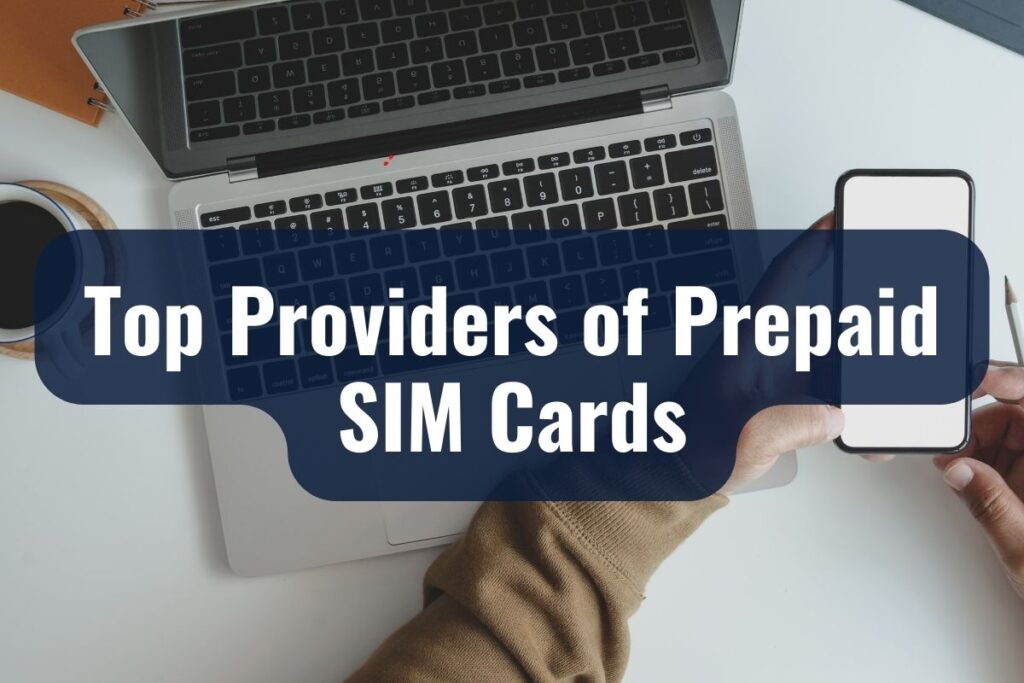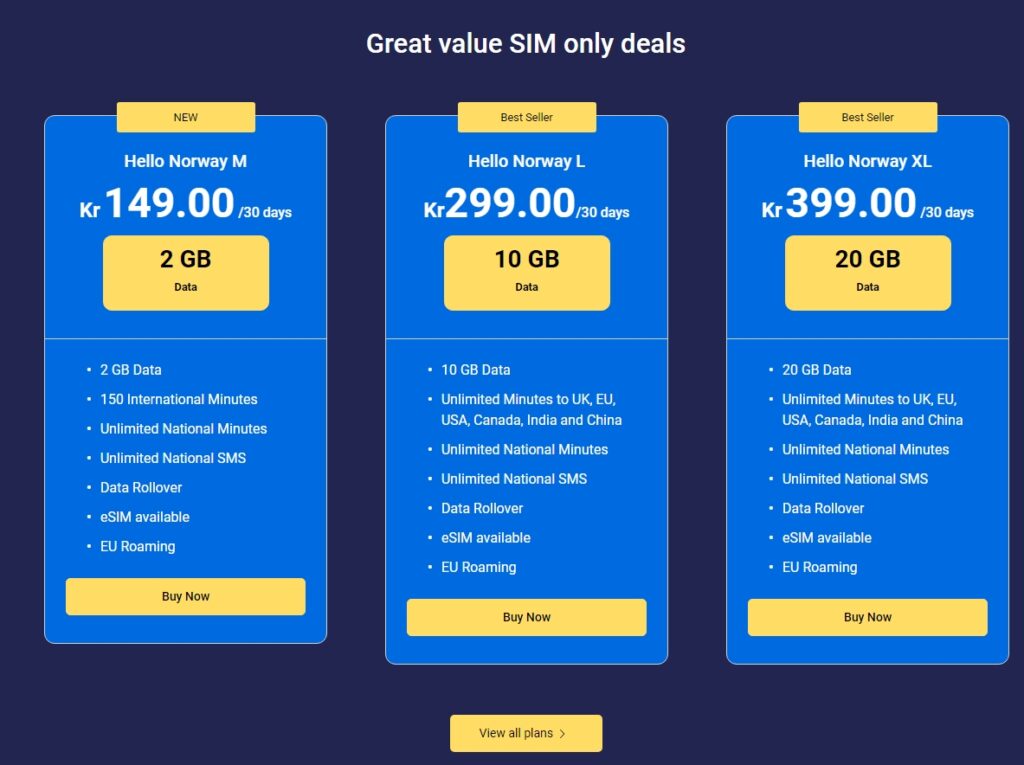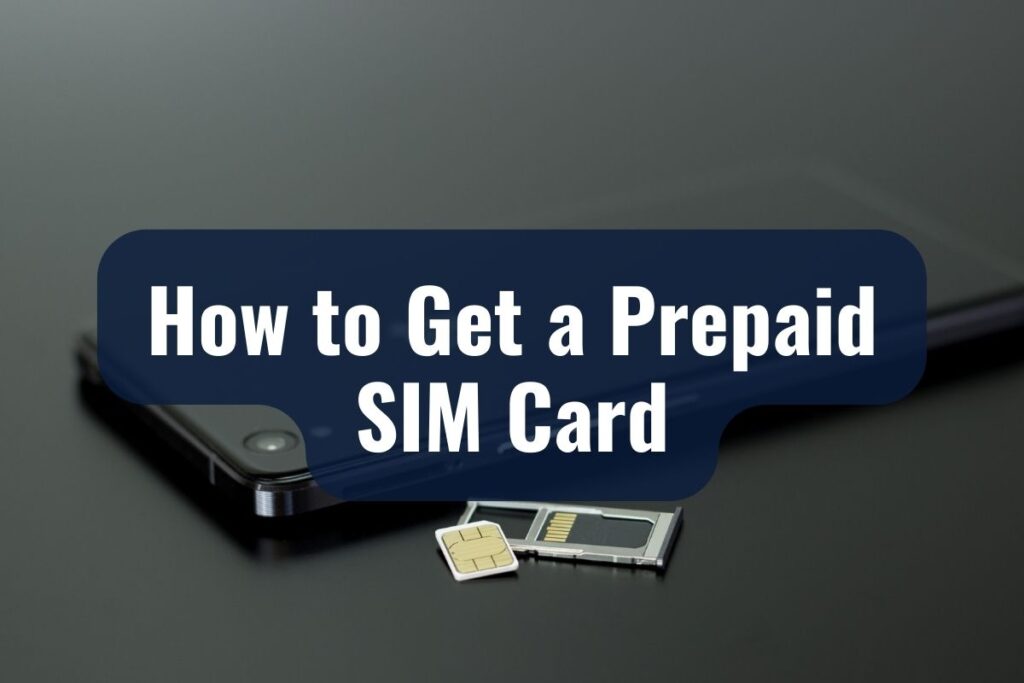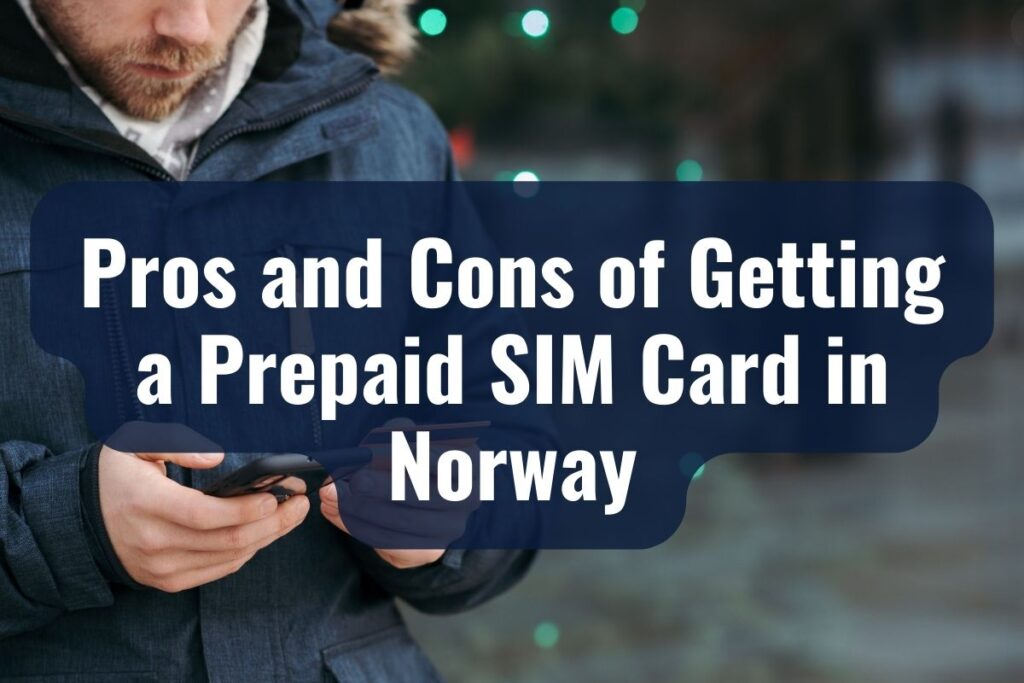Whether you’re in Norway for work, study, or vacation, having reliable access to mobile networks is crucial. A prepaid SIM card offers an accessible and hassle-free solution for your communication needs.
In this guide, we’ll walk you through the essentials of prepaid SIM cards in Norway. From the leading providers to the costs involved, this article aims to provide you with a practical understanding of how to stay connected without breaking the bank.
Key Takeaways
- Norway has multiple mobile network providers offering a range of prepaid SIM card options.
- Identification like a passport or EU ID is generally required to purchase a SIM card.
- Costs vary between providers and can include activation fees, data rates, and call/text charges.
- Additional features like roaming options and data packs can add value to your plan.
- Prepaid SIM cards offer flexibility but may require frequent top-ups and have limited services.
Types of Mobile Networks in Norway
When it comes to choosing a prepaid SIM card, understanding the types of mobile networks available in Norway can help you make a more informed decision. In Norway, the main types of networks you’ll encounter are 3G, 4G, and the increasingly available 5G networks.
3G Networks
3G or Third-Generation Networks are now considered a bit dated but are still widely available. They offer decent speeds for basic internet browsing, sending emails, and using messenger apps. However, they may not be suitable for more data-intensive tasks like streaming video.
4G Networks
4G or Fourth-Generation Networks offer significantly higher speeds and are suitable for all types of mobile internet activities, including streaming high-definition videos, online gaming, and video conferencing. 4G coverage is extensive in Norway, covering most urban areas and many rural regions as well.
5G Networks
The latest in mobile technology, 5G networks, are gradually rolling out in Norway. As of now, 5G is primarily available in bigger cities and offers speeds that are several times faster than 4G.
If you’re planning to use data-intensive applications or work remotely, a 5G-capable SIM card might be worth considering. However, you’ll need a 5G-compatible phone to make use of this technology.
Coverage Areas
Most populated areas, including cities like Oslo, Bergen, and Trondheim, have strong 4G and even 5G coverage. In contrast, remote regions may only have access to 3G or might be without any coverage. It’s always a good idea to check the coverage maps provided by the carrier to ensure you’ll have service in the areas you plan to visit.
Top Providers of Prepaid SIM Cards

When choosing a prepaid SIM card in Norway, you’ll generally be selecting from a few key providers. These companies are known for their reliable service, extensive coverage, and various options tailored to different needs. Here are some of the top providers you might consider.
Lycamobile

If you’re looking for a budget-friendly option, particularly for international calls, Lycamobile might be the right choice. Though their network coverage isn’t as extensive as Telenor or Telia, they offer some of the most affordable international calling rates.
Where to Buy: Lycamobile SIM cards are often sold in convenience stores, kiosks, and online.
Popular Prepaid Plans: Their plans are generally geared toward those who need to make international calls.
How to Top-Up: You can easily top-up your Lycamobile balance online or by purchasing a top-up card from various retail locations.
Telenor
Telenor is one of the largest telecommunications companies in Norway and offers a broad range of prepaid plans. Their coverage is extensive, spanning both urban and rural areas.
Where to Buy: Telenor stores, authorized dealers, airports, and even some grocery stores.
Popular Prepaid Plans: They offer different types of prepaid plans, some focusing on data, while others offer better rates for international calls.
How to Top Up: You can top up your credit online, via the Telenor app, or by purchasing a voucher in stores.
Telia
Telia is another major player in Norway’s telecommunications landscape. They are known for their competitive pricing and robust 4G network.
Where to Buy: Telia stores are common in shopping centers and cities, and their prepaid SIM cards are also available at airports.
Popular Prepaid Plans: Telia offers a variety of plans, including those focused on data-only, which are ideal for tourists who primarily need internet access.
How to Top-Up: Similar to Telenor, you can top up your credit online, in stores, or via their mobile app.
ICE
ICE is a newer entrant to the market but has quickly gained a reputation for affordable rates and good coverage, especially in urban areas.
Where to Buy: ICE stores, online, and select retail partners.
Popular Prepaid Plans: ICE typically offers cost-effective data plans, making it a good option for those who don’t intend to make many calls.
How to Top-Up: Top-up options include online payment and vouchers available in stores.
How to Get a Prepaid SIM Card

Acquiring a prepaid SIM card in Norway is a straightforward process, but there are some requirements and steps you’ll need to follow. This section will guide you through both in-store and online methods of getting your hands on a prepaid SIM card.
Identification Requirements
Before you can purchase a SIM card, you’ll typically need to provide some form of identification. For most providers, a passport or a European Union ID card is sufficient. Here’s what you need to know about identification:
In-Store: You will need to present your ID physically, and some stores may take a copy for their records.
Online: Verification usually involves uploading a scan of your ID, and some providers may require an additional verification step, like sending a code to a Norwegian address.
In-Store Purchase
One of the easiest ways to get a prepaid SIM card is to buy one at a physical store. Here’s how:
- Locate a Store: Find a retail store or kiosk that sells SIM cards. Airports, train stations, and city centers are good places to look.
- Choose a Plan: Speak with a store representative to find the most suitable prepaid plan based on your needs.
- Provide ID: Show your passport or EU ID card for identification.
- Payment: Pay for the SIM card and any initial credit you want to add.
- Activation: Most stores will help you insert the SIM card and activate it on the spot.
Online Purchase
Buying a SIM card online is another convenient option, especially if you wish to have everything set up before you arrive in Norway. Here’s how to go about it:
- Visit Provider’s Website: Navigate to the website of the provider you have chosen.
- Select a Plan: Browse through the available prepaid plans and select one that suits your needs.
- Identification: Upload scans of your identification documents.
- Payment: Make payment for the SIM card and any initial credit.
- Delivery: Depending on the provider, the SIM card can either be sent to a Norwegian address or picked up at specific locations.
Costs Involved

Understanding the costs associated with getting a prepaid SIM card in Norway is essential for managing your expenses effectively.
Activation Fee
Some providers may charge a one-time activation fee when you first purchase your SIM card. This fee varies by provider but is usually in the range of 50 to 100 Norwegian Krone (approximately 5 to 10 USD).
Rates
The rates for using a prepaid SIM card can differ significantly depending on the provider and the type of plan you choose. Here are some general guidelines:
- Data: Depending on the provider and plan, data rates can range from 10 to 50 Norwegian Krone per gigabyte.
- Calls: Local calls typically cost between 0.5 to 2 Norwegian Krone per minute.
- Texts: SMS rates are generally low, often around 0.5 to 1 Norwegian Krone per text.
It’s advisable to carefully review the rate information for each plan, as some may offer better value for data, while others might have lower rates for calls or international communications.
How to Top-Up
Keeping your prepaid SIM card active and funded is crucial. You can add credit to your account through various means:
Online: Most providers allow you to top-up your balance via their website or mobile app using a credit or debit card.
In-Store: You can also buy top-up vouchers at the provider’s stores, supermarkets, and convenience stores. These vouchers come with a code that you’ll need to enter into your account to add the credit.
Automatic Top-Up: Some providers offer an automatic top-up feature, where your balance will automatically be replenished when it falls below a certain amount.
Additional Features
Apart from the basic functionalities of calling, texting, and using the internet, many providers offer additional features that can be beneficial for your specific needs. Whether it’s roaming options or special data packs, knowing about these features can help you make the most of your prepaid SIM card in Norway.
Roaming Options
If you’re planning to travel outside of Norway but within the European Economic Area (EEA), many providers offer free or reduced-rate roaming services. This means you can use your Norwegian SIM card in other EEA countries without incurring extra charges.
Data Packs or Add-Ons
For those who need more than the standard data allowance, additional data packs are often available. These are particularly useful for heavy internet users or those who require high-speed data for activities like streaming or video conferencing.
Special Offers for International Calls
Some providers offer special plans or add-ons for international calls. These features are ideal for those who need to stay in touch with family, friends, or colleagues in other countries. Rates for these special international plans are often much lower than standard international call rates.
Related: Making Calls to and from Norway
Bundles and Combo Packs
Certain providers offer bundles or combo packs that include a combination of texts, calls, and data. These are cost-effective options if you have varied needs and want to avoid the hassle of managing multiple top-ups for different services.
Customer Service in English
For non-Norwegian speakers, some providers offer customer service in English. This can be a deciding factor if you’re concerned about navigating technical issues or account management in a foreign language.
Pros and Cons of Getting a Prepaid SIM Card in Norway

While prepaid SIM cards offer a convenient way to stay connected, they come with their own set of advantages and disadvantages.
| Pros | Cons |
| Flexibility in usage | May be expensive for heavy users |
| No long-term commitment | Limited additional services |
| Easy to acquire | ID requirements can be an obstacle |
| Variety of plans | Frequent top-ups may be inconvenient |
| Extensive network coverage |
Understanding these pros and cons can help you decide whether a prepaid SIM card is the right option for you.
Pros
Flexibility: Prepaid SIM cards allow you to pay for only what you need, making it easier to manage your expenses.
No Long-Term Commitment: Unlike contract plans, there are no long-term commitments, allowing you to switch providers or plans as your needs change.
Easy to Acquire: With minimal documentation and quick activation, getting a prepaid SIM card is usually a hassle-free process.
Variety of Plans: From data-centric plans to special international call rates, there’s a plan for almost every need.
Coverage: Major providers offer extensive coverage, including 4G and increasingly 5G, across Norway.
Cons
May Be Expensive for Heavy Users: If you’re a heavy data or call user, prepaid rates can quickly add up, making it potentially more expensive than a postpaid plan.
Limited Services: Some additional features and services may only be available to postpaid customers.
ID Requirement: For tourists and short-term visitors, the need for identification can be an extra hurdle.
Frequent Top-Ups: Depending on your usage, you may need to top-up your balance frequently, which can be inconvenient.
Weighing these pros and cons will give you a more rounded view of what to expect, allowing you to make an informed choice about whether a prepaid SIM card meets your communication needs in Norway.
Frequently Asked Questions
Can I Buy a SIM Card at the Airport?
Yes, most international airports in Norway, such as Oslo Airport, have kiosks or stores where you can buy SIM cards from various providers.
Do I Need a Norwegian Bank Account to Top-Up Online?
No, most providers accept international credit or debit cards for online top-ups. Some may even offer PayPal as an option.
How Do I Check My Balance?
The process varies by provider, but commonly you can check your balance by dialing a specific number, usually provided in your initial SIM kit, or through the provider’s mobile app.
Can I Use My Prepaid SIM Card in Other European Countries?
Many Norwegian providers offer free or reduced-rate roaming within the European Economic Area (EEA). Always check the roaming rates and terms with your specific provider before you travel.
What Happens If I Run Out of Data or Minutes?
Once you exhaust your plan’s data or minutes, additional charges may apply for continued use, or the services may be suspended until you top-up your account.
Do Prepaid SIM Cards Expire?
Yes, most prepaid SIM cards have an expiration date if not recharged or used within a specific period. The time frame varies but is typically around 6 to 12 months.
Can I Receive Calls and Texts From My Home Country?
Yes, you can receive international calls and texts. However, the person contacting you will be charged based on their provider’s international rates.
Is Unlimited Data Available?
While some providers may offer plans with high data allowances, truly unlimited data plans are less common for prepaid SIM cards in Norway.
Do I Need a 5G-Compatible Phone for a 5G SIM Card?
Yes, to make use of the 5G network, you’ll need a 5G-compatible phone in addition to a 5G-capable SIM card.


